
Sandra Fancher
May 5, 2021
Over the last decade, community colleges have seen significant changes to their role in the higher education landscape.
Community college is no longer considered the “Plan B” to a four-year degree. Along with less expensive gen eds, these institutions provide education options and affordable programs for non-traditional students and people seeking a more direct route to the workforce.
With this significant change—and steep competition—many community colleges in the last few years have realized their website does not clearly communicate their intrinsic value and advantages.
While students may better understand the value, parents also need a clear and strong sell on the value of a community college education. They need to know the benefits over a four-year college or as a starting point for a four-year degree.
In the past few years, Stamats has seen a surge in community college RFPs for website strategy. With our passion for higher ed and deep expertise in digital strategy, we launched several new, successful sites on an accelerated timeline to meet COVID-19 deadlines for fall 2020. Through our comprehensive discovery process, we quickly identified that community colleges deserve a modified plan tailored to them.
As a company, we recognize and appreciate the value of higher education and the role community colleges play in their community. Here are six of the most important reasons why community colleges deserve special digital strategy considerations.
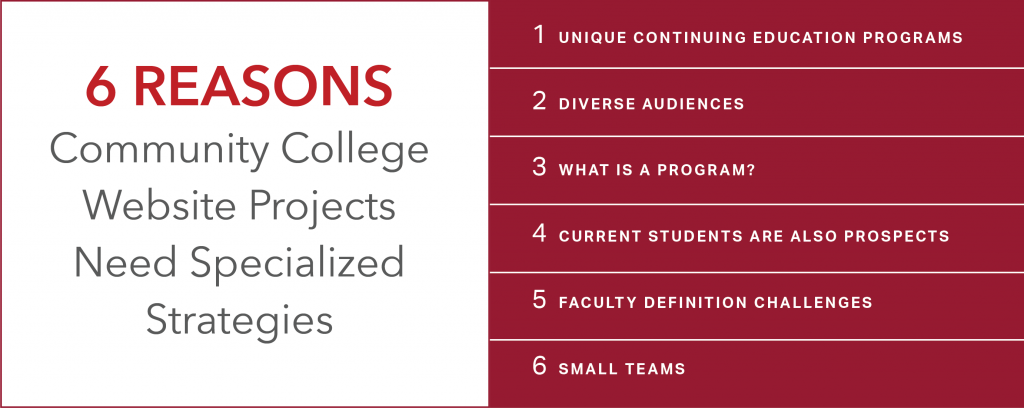
Continuing education and special certificates in areas like Nurse Aide Training, Class A CDL Professional Drivers, or Electrical Specialists are almost always managed in a separate website and program search.
While that follows the internal structure, separating them from the certificates and two-year programs does the students and institution a disservice. Most students don’t understand the internal workings of continuing education versus certificates, creating a confusing user experience.
RECOMMENDATION: Create an integrated program search.
If you cannot integrate with an application programming interface (API)—software that lets two apps “talk” to each other—consider adding a high-level overview of the programs to your main program search. Also, make sure you have a strong cross-linking strategy.
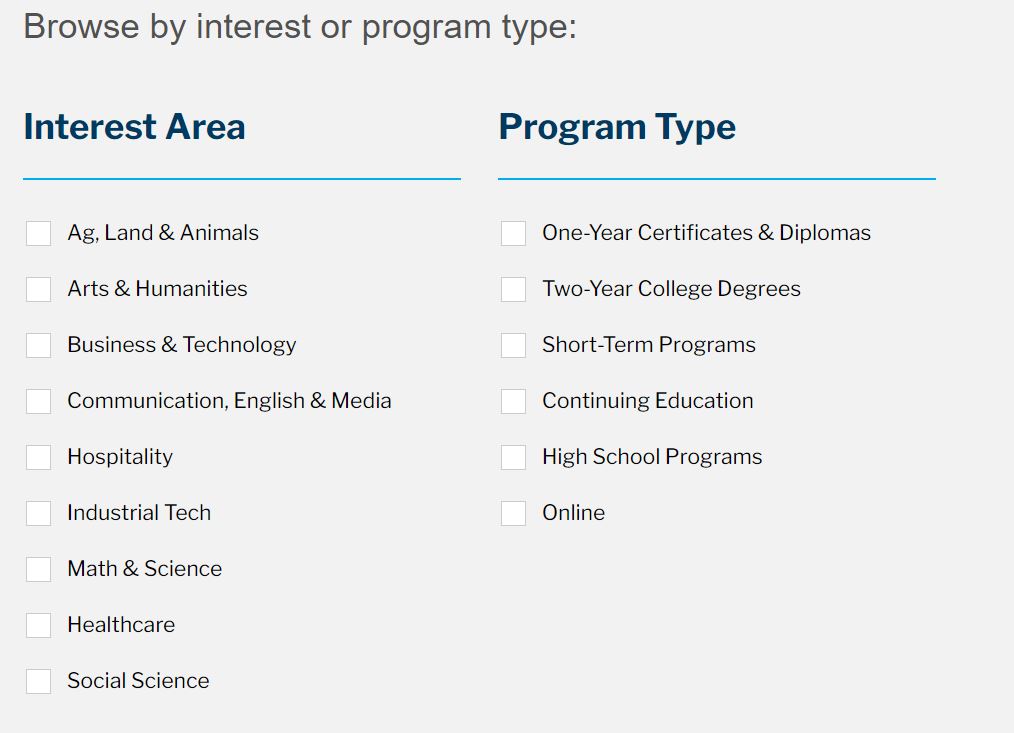
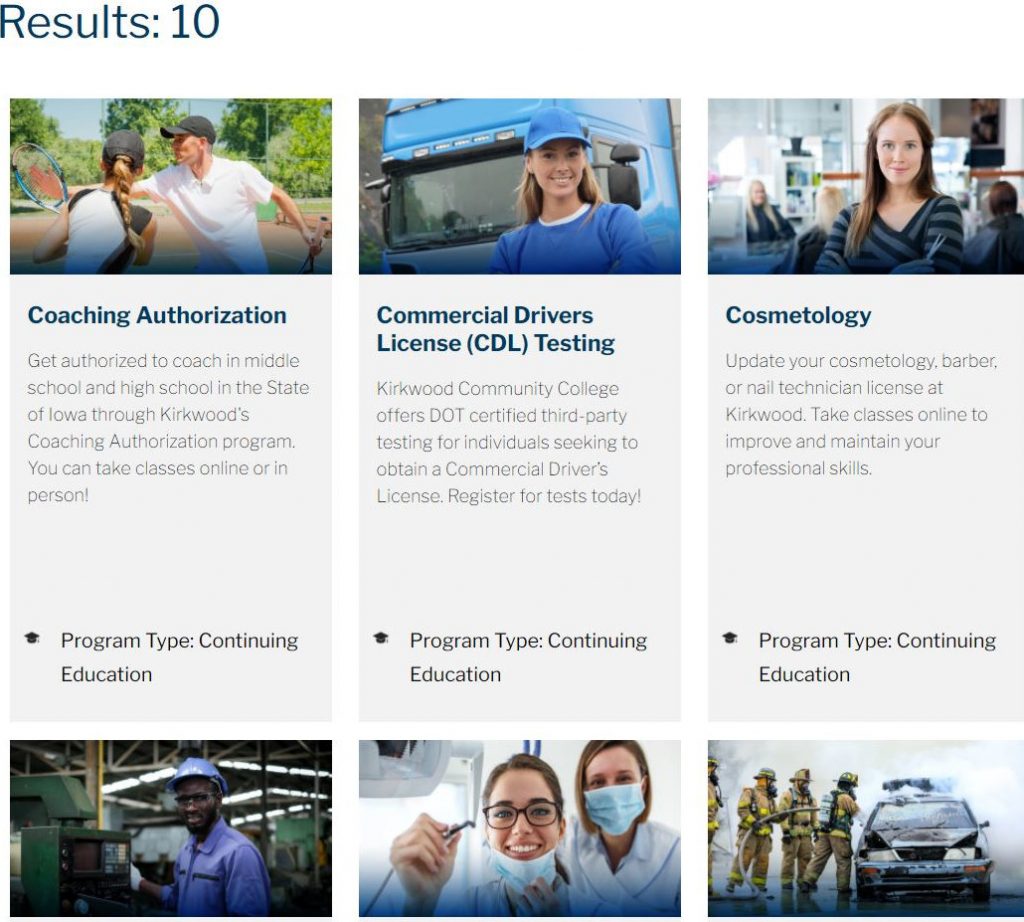
Community colleges have a much larger audience than traditional four-year schools. And each of these audiences has very different needs.
Students are seeking a mix of affordability, flexibility, and close-to-home vibes. Community colleges attract first-time college students, those planning a four-year degree who want to reduce their overall cost, and individuals who are eager to enter the workforce or up their career skills.
This student mosaic is diverse and complex. Our audience workshop is specifically tailored for the community college’s needs. We spend more time detailing out the complexity of each audience served.
RECOMMENDATION: Create a persona matrix to identify all audiences the website needs to serve. Include your key message to this audience, their needs, and their next steps in the conversion journey.
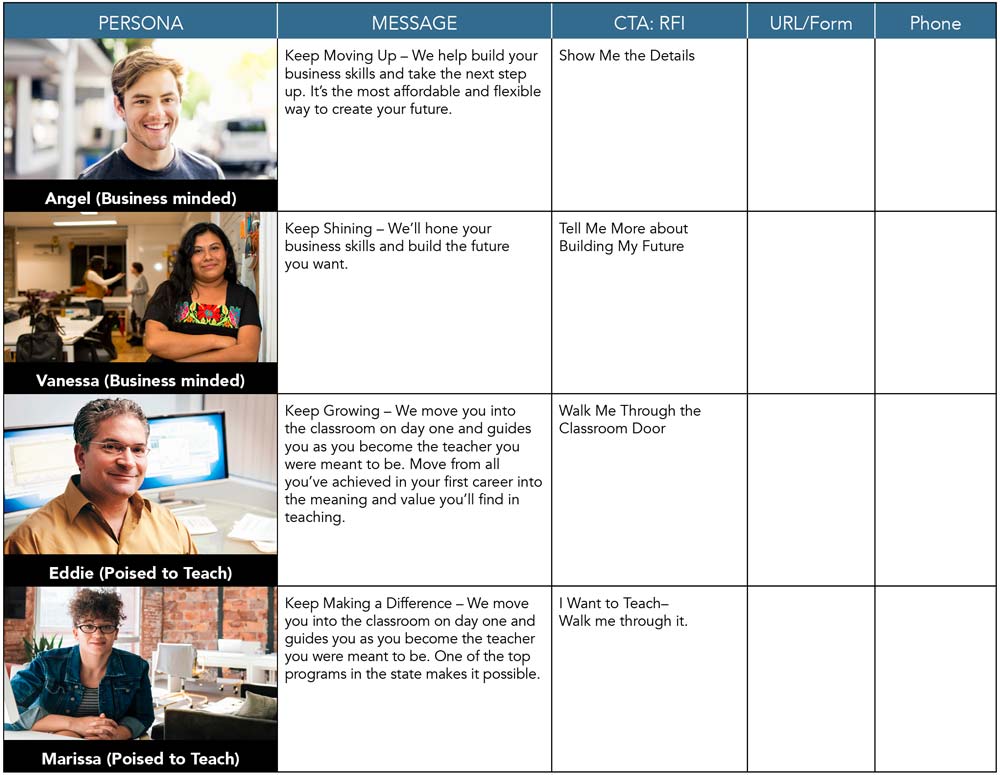
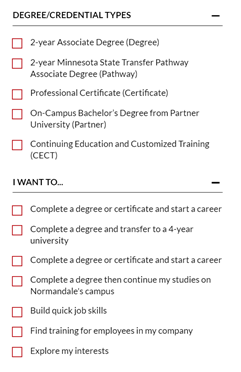
Determining what is a program vs. a certification or class is not as simple as it may sound, especially in a community college. Because certificates live next door to two-year programs, it may take lengthy conversations to determine what exactly defines a program.
We will help you evaluate your programs to bring clarity before making the big decisions involved with any website redesign.
Part of program definition includes considering defining outcomes in the form of career choices and interests. Creating a program search that complements natural conversations with a prospective student increases engagement and success in finding the right match.
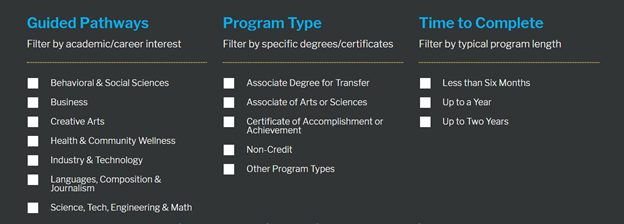
RECOMMENDATION: Create a program spreadsheet detailing what is defined as a program or certificate. Include information your team and audiences need to know: modality, level, type of program or certificate, time to complete, outcomes, related programs and any other helpful information. Contact us to get a free copy of our program worksheet.
One of the complexities is that a community college’s current students can also be their prospective students. For example, a student involved in a continuing education program for business development is a prime candidate for an associate degree in Business Administration or Administrative Management.
A well-designed content marketing strategy assists a college’s reach to those students who are seeking next steps while they are already enrolled. A tailored call-to-action strategy can actively engage and inform your current students before they become your former students.
RECOMMENDATION: Cross-promote programs using dynamic content from one program to another.
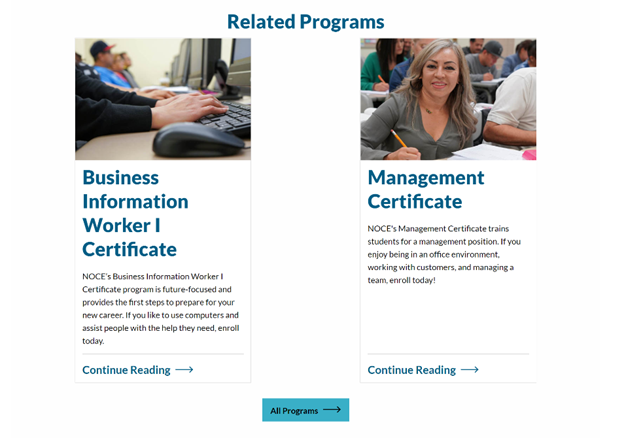
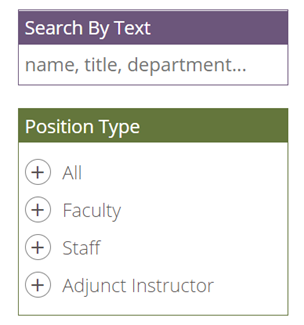
Just as with programs, the definition of faculty can be a complex question. At what level do you add adjunct or continuing education faculty members? Also, what label do students use? They typically do not distinguish ”professor” from ”instructor,” as those terms are interchangeable with ”teacher.”
Our discovery process works through these decisions because alignment is an integral part of a successful launch.
RECOMMENDATION: Develop a plan and ongoing governance for faculty classification. Make sure your website allows easy to filter options for the user. If possible, connect the website to an automated feed to keep information current.
BONUS: Dynamically link faculty members to their programs. Then integrate them into the program pages so they are easy to find within the program.
It is common for community colleges to have smaller teams managing a plethora of projects and roles. Redesigning the website might be their first large digital project, or they might have a dozen large projects they are managing. This means the team has limited time and everything from directives to processes must be clear, organized, and optimized.
We work hard to respect their time, always coming prepared with recommendations and the tools necessary to make it easy for our clients. From training in the CMS to content migration and site launch, we are committed to supporting the college’s teams involved in these projects. We have a proven process that will give the guidance needed for a community college to reach prospective students through an enhanced digital presence.
Our Community College process includes:
RECOMMENDATION: Following a clear stakeholder engagement plan. This will reduce change requests, build adherence to a user-centered site, and raise the visibility of the digital team.
At Stamats, we have created a specific process for community college projects that give them the special attention and change management they need. Our team is the right size to be your team-for-hire. Big enough that we have experts in every area to lean on (even if they aren’t on your project!), yet small enough that you don’t get lost among our other work.
Ready to strategize? Contact us today for a free consultation.
Ready to Get Started?
Reach out to us to talk about your strategy and goals.